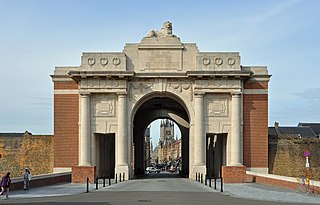
The Menin Gate, officially the Menin Gate Memorial to the Missing, is a war memorial in Ypres, Belgium, dedicated to the British and Commonwealth soldiers who were killed in the Ypres Salient of World War I and whose graves are unknown. The memorial is located at the eastern exit of the town and marks the starting point for one of the main roads out of the town that led Allied soldiers to the front line. “Menin” is the traditional name of the gate in this location of Ypres' city walls because it leads to the town of Menen. Designed by Sir Reginald Blomfield and built by the Imperial War Graves Commission, the Menin Gate Memorial was unveiled on 24 July 1927.

The German war cemetery of Langemark is near the village of Langemark, part of the municipality of Langemark-Poelkapelle, in the Belgian province of West Flanders. More than 44,000 soldiers are buried here. The village was the scene of the first gas attacks by the German army in the western front, marking the beginning of the Second Battle of Ypres in April 1915.

Ypres Reservoir Cemetery is a Commonwealth War Graves Commission (CWGC) burial ground for the dead of the First World War located in the Ypres Salient on the Western Front.

Railway Dugouts Burial Ground is a Commonwealth War Graves Commission (CWGC) burial ground for the dead of the First World War located in the Ypres Salient on the Western Front.

Hyde Park CornerCemetery is a Commonwealth War Graves Commission (CWGC) burial ground in Belgium for the dead of the First World War, located in the village of Ploegsteert in the Ypres Salient on the Western Front.
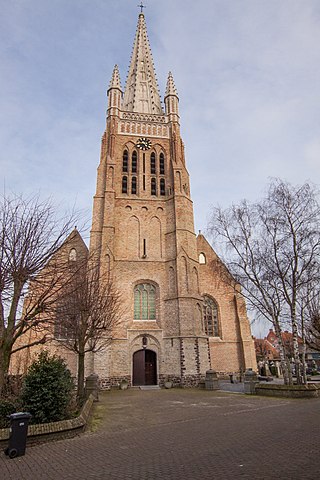
Boezinge is a village in the municipality of Ypres in the Belgian province of West Flanders. Boezinge can be reached via the N369 road in the direction of Diksmuide. It was an independent municipality until 1977.
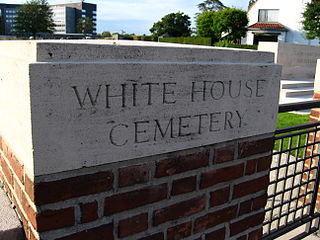
White House Cemetery is a Commonwealth War Graves Commission (CWGC) burial ground for the dead of the First World War located in the Ypres Salient on the Western Front in Belgium.

Bedford House Cemetery is a Commonwealth War Graves Commission burial ground for the dead of the First World War located near Zillebeke, itself near Ypres, on the Western Front in Belgium.

Potijze Burial Ground Cemetery is a Commonwealth War Graves Commission (CWGC) burial ground for the dead of the First World War located in the Ypres Salient on the Western Front.

Potijze Château Lawn and Grounds Cemeteries are Commonwealth War Graves Commission (CWGC) burial grounds for the dead of the First World War located in the Ypres Salient on the Western Front.

Potijze Château Wood Cemetery is a Commonwealth War Graves Commission (CWGC) burial ground for the dead of the First World War located in the Ypres Salient on the Western Front.

Ridge Wood Military Cemetery is a Commonwealth War Graves Commission (CWGC) burial ground for the dead of British Commonwealth soldiers who fought in the First World War. The cemetery is in Voormezeele, West Flanders, Belgium, in the Ypres Salient of the Western Front.

New Irish Farm Cemetery is a Commonwealth War Graves Commission burial ground for the dead of the First World War located near Ypres in Belgium on the Western Front.
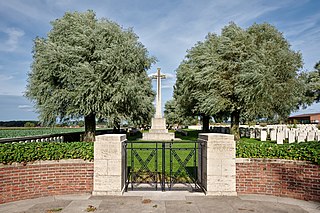
PerthCemetery is a Commonwealth War Graves Commission burial ground for the dead of the First World War located near Ypres (Ieper) in Belgium on the Western Front.

Zillebeke Churchyard Commonwealth War Graves Commission Cemetery forms part of the village churchyard located around the Catholic parish church of Zillebeke in Belgium.
Hill 10 Cemetery is a Commonwealth War Graves Commission Cemetery in the former Suvla Bay sector of the Gallipoli Peninsula, Turkey. The battles at Gallipoli, some of whose participating soldiers are buried at this cemetery, was an eight-month campaign fought by Commonwealth and French forces against Turkish forces in an attempt to force Turkey out of the war, to relieve the deadlock of the Western Front (France/Belgium) and to open a supply route to Russia through the Dardanelles and the Black Sea.

Essex Farm Cemetery is a World War I, Commonwealth War Graves Commission burial ground within the John McCrae Memorial Site near Ypres, Belgium. There are 1,204 dead commemorated, of which 104 are unidentified. The cemetery was designed by Sir Reginald Blomfield and has an area of 6,032 square metres (64,930 sq ft).

Lijssenthoek Military Cemetery is a Commonwealth War Graves Commission (CWGC) burial ground for the dead of the First World War in the Ypres Salient on the Western Front. After Tyne Cot, it is the second largest cemetery for Commonwealth forces in Belgium. Lijssenthoek Military Cemetery is located near Poperinge in the province of West Flanders. Most of those buried in the cemetery are war casualties who had been wounded near Ypres and later died in the four large Allied casualty clearing stations located in this area.
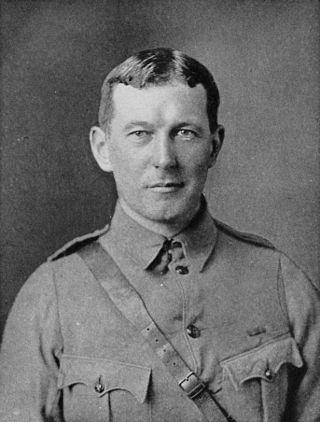
Site John McCrae is a World War I memorial site near Ypres, Belgium. It is named after the Canadian physician Lieutenant Colonel John McCrae, MD (1872–1918), author of the famous poem "In Flanders Fields", which he composed while serving at this site in 1915.

A Duhallow Block is a type of memorial that is erected where graves have been lost, for example when they have been destroyed by subsequent conflict. It is a marker stone which is found in cemeteries maintained by the Commonwealth War Graves Commission.























